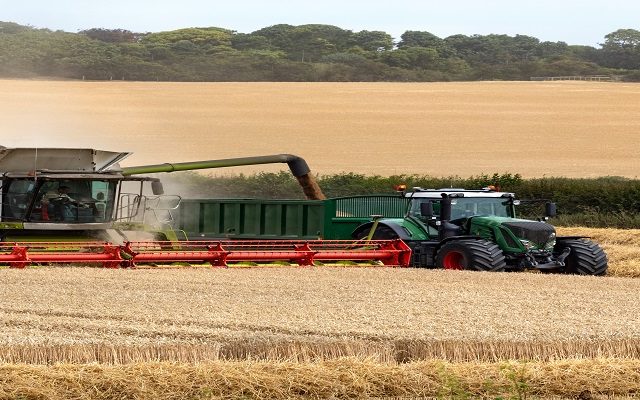In the Know: Top tips on staying compliant with SFI rules
Defra announced on 11 March 2025 that it would no longer be accepting new applications to the Sustainable Farming Incentive (SFI) scheme. However, existing agreements will continue and the following rules still apply to those. Details of a revised SFI are expected in the summer.
Tens of thousands of farmers in England have now signed up for a Sustainable Farming Incentive (SFI) agreement, with one of the terms and conditions being that you must be able to provide evidence that you’ve established and managed each action in a way that could “reasonably be expected to achieve its aim”.
The Rural Payments Agency (RPA) monitors that farmers are meeting their obligations through a combination of inspections, remote monitoring and desk-based administrative checks.
Evidence must be provided if the RPA requests it and it also needs to be kept for at least seven years from the agreement’s end date, or its termination date if that was earlier.
Failure to provide the evidence could result in either a warning, or payments being withheld, reduced or even clawed back.
The evidence that is required is set out in the guidance notes for each individual action, but it tends to be quite broad. This is because one of the aims of the SFI is that it is less prescriptive than previous agri-environment schemes.
Here are some top tips on collecting and storing the necessary information and how to avoid some common pitfalls of the scheme:
General advice
Save a copy of the management guidance
The management guidelines for some SFI actions have changed since the scheme was first piloted in 2022 and it is possible they will continue to do so. The rules which you need to follow are those which were applicable on the date your agreement began.
Navigating the different iterations of the guidance booklets online (2023 or 2024’s extended offer) can be tricky as they run to hundreds of pages and include lots of links. It can be helpful to save PDFs or print off copies of the relevant actions at the start of your agreement, so you can quickly refer to them and know you are looking at the correct version.
As you do this, make a note of any key dates which you need to observe through the calendar year. For example, under the basic overwinter stubble (AHW6) action the guidance suggests growers must leave the stubble from a cereal crop, oilseed rape or linseed until around mid-February, while the winter bird food mix on arable and horticultural land (CAHL2) must be maintained until around the end of February.
Keep a diary of operations
Use a diary (paper or online) so you can make a record ofthe dates of all SFI field operations and the associated land parcel number. This is always best done on the day, otherwise it is too easy to forget exactly what was done and when. This diary should be supported by any associated invoices i.e. for seed or a contractor’s bill.
File photographs regularly
Photographic evidence of what has been done and when is required for many of the actions. Take pictures on a regular basis and make the time every few weeks to download them from your phone onto the computer so you never go too behind.
It is very helpful when it comes to an inspection if the pictures are collated so they link with a particular land parcel. There are a number of digital mapping tools available which enable you to link photographs and other management information to a map. However, if looking for a low-tech option then you can create a Word document for each land parcel and save the pictures into the corresponding file, with a quick note of when it was taken and what the picture shows.
Put laminated maps in every tractor
We often advise farmers to keep a copy of a simple laminated map, showing where every SFI action on the farm is located, in each tractor. This is particularly helpful where there are people working on the farm who may not have been involved in pulling together the agreement. It can help prevent workers inadvertently carrying out a field operation which breaches the rules of a particular action.
Do your own inspection ahead of submitting your claim
Not everything goes to plan and so it can be helpful to complete your own informal inspection of all the different actions before submitting your annual claim. This allows you to make a judgement about whether a land parcel needs to be dropped from the claim for that year because the obligations of the agreement have not been met.
Guidance on specific actions
Assess soil, produce a soil management plan and test soil organic matter (CSAM1)
The soil assessment must have been carried out and a written soil management plan produced within 12 months of the start of the agreement.
Schedule in your soil tests over the course of your agreement, so you meet the requirement that within the last five years all land parcels have had their soil organic matter (SOM) measured. Without a reminder in the diary, it can be easy to forget which land parcels need soil tests in years two and three of the agreement. Also, check that any old soil test results you may be relying on actually included SOM – not all do.
The soil management plan should be reviewed each year.
Assess nutrient management and produce a review report (CNUM1)
Under SFI the nutrient management plan must be completed by a FACTS-qualified adviser, so the plan you already have for the Red Tractor scheme may not be adequate.
As with the soil management plan, the nutrient management plan needs to be completed within the first 12 months and then reviewed each year.
Assess integrated pest management and produce a plan (CIPM1)
The assessment and IPM plan must be completed within the first 12 months of an agreement by a BASIS-qualified advisor. As with the nutrient management plan, this is different to the Red Tractor scheme which allows farmers to create their own plans.
Companion crop on arable and horticultural land (CIPM3)
Photographic evidence is particularly recommended for anyone claiming for a companion crop which dies over the winter. For example, anyone using buckwheat as a companion for oilseed rape should make sure they have photographic evidence of the buckwheat before it dies, so at a later point they can prove it was drilled.
Assess and record hedgerow condition (CHRW1)
In our experience,this is one of the most admin-heavy actions on the list, in that there is a requirement to assess the condition of all the hedgerows entered into this agreement and produce a written hedgerow condition assessment record for these hedgerows. There are templates and apps to help you do this, but it essentially involves assessing the structure, width and height of all hedges, as well as recording the length of gaps and number of hedgerow trees so it will take some time to complete.
4m to 12m grass buffer strip on arable and horticultural land (CAHL4)
Buffer strips are expected to have an intact grass sward throughout the year and without signs of any tracks or compaction. Make sure everyone on the farm understands they are not meant to be driven over, used for turning or for storage. Buffer strip widths are also worth checking at least once a year to check that they still meet the minimum width required. Grass buffer strips can be established through drilling a seed mix or left to natural regenerate, therefore seed invoices are not always present in this instance.
If you have any further questions about any aspect of designing and managing a SFI agreement, please do get in touch with a member of our Farming team.
This article forms part of our ‘In the Know’ series which sees Strutt & Parker experts share insight and advice on how farms and estates can improve their business resilience, both from an economic and environmental perspective.






